Inside The New York Botanical Garden
Archive: January 2011
Posted in Bill Buck, From the Field, Science on January 31 2011, by William R. Buck
Ed. note: NYBG scientist and Mary Flagler Cary Curator of Botany, Bill Buck is currently on expedition to the islands off Cape Horn, the southernmost point in South America, to study mosses and lichens. Follow his journeys on Plant Talk.
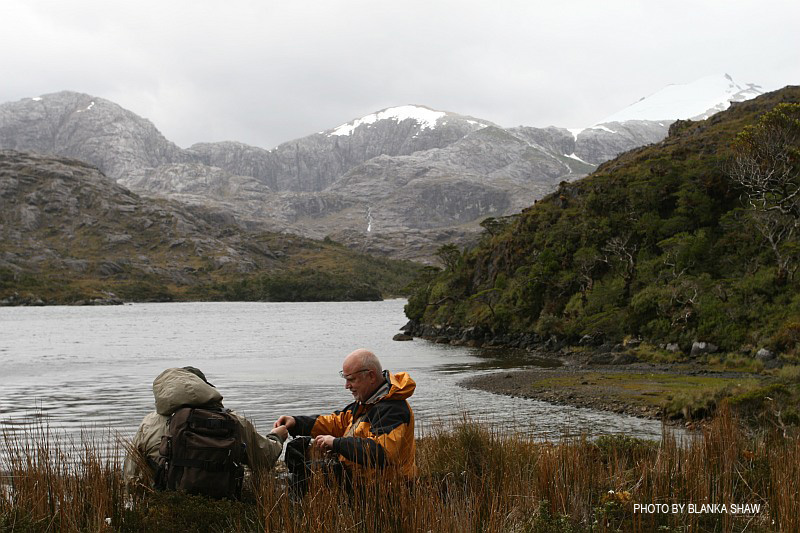 January 24, 2011, Seno Chasco, just north of isthmus to Brecknock Peninsula, Chile, 54° 34’S, 71° 39’W
January 24, 2011, Seno Chasco, just north of isthmus to Brecknock Peninsula, Chile, 54° 34’S, 71° 39’W
Last night, after I had finished my work for the day, I was enjoying the night out on the deck (i.e., a lull in the rain) and watching Blanka, Jim and Juan down in the hold putting their collections on the dryer. They have each been consistently excited about going out into the field everyday, no matter what the weather. Back on the ship they happily go through their collections. Watching their interest and energy makes me feel good that I am able to provide them with this opportunity. It also gives me something to look forward to, for those future expeditions when, in upcoming years, new teams of bryologists will accompany me to this spectacular region. Although it is something that never occurred to me before, this truly is one of the highlights of this project, being able to see the excitement on the faces of bryologists who have never seen such a mossy paradise before, and knowing that I could give them this gift (thanks to the National Science Foundation).
More on Cape Horn's mossy paradise below.
Posted in Photography on January 31 2011, by Plant Talk
Looking down the main pathway of the Perennial Garden.
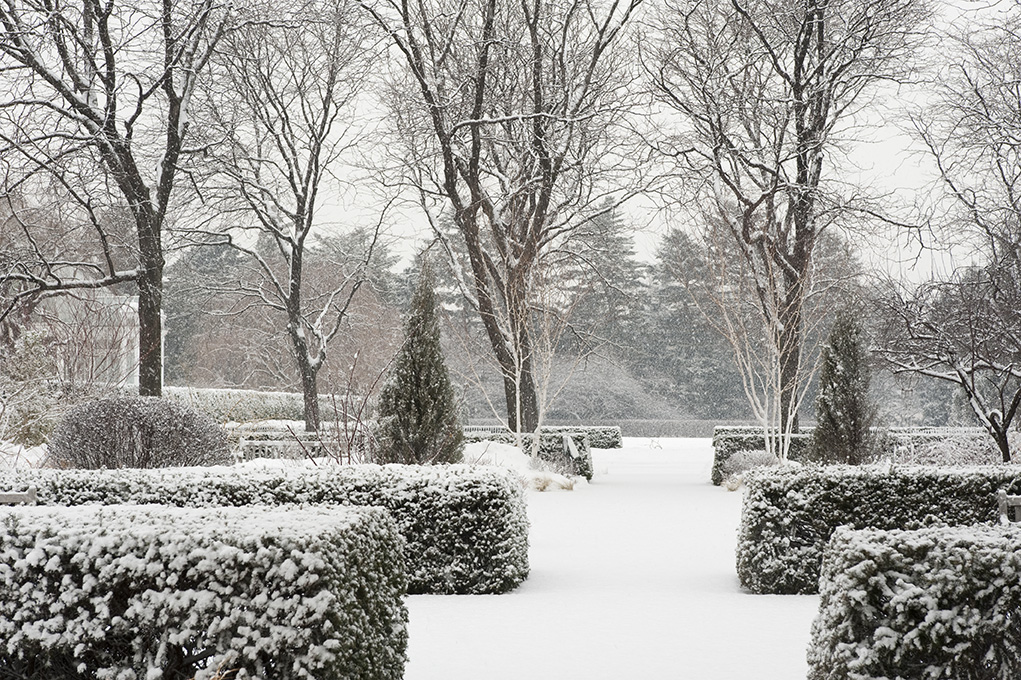
(photo by Ivo M. Vermeulen)
Posted in Photography on January 30 2011, by Plant Talk
From the roof of the Library Building.
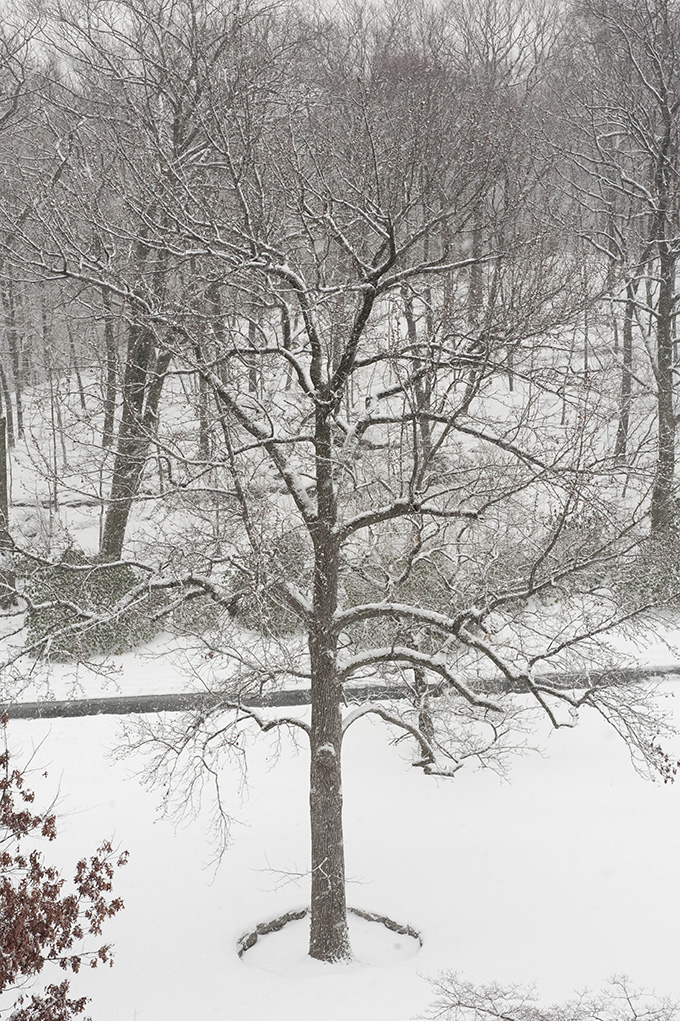
(photo by Ivo M. Vermeulen)
Posted in Photography on January 29 2011, by Plant Talk
The snow gathering on this Magnolia kobus near the Visitor Center makes it look like something out of a fantastic dream.
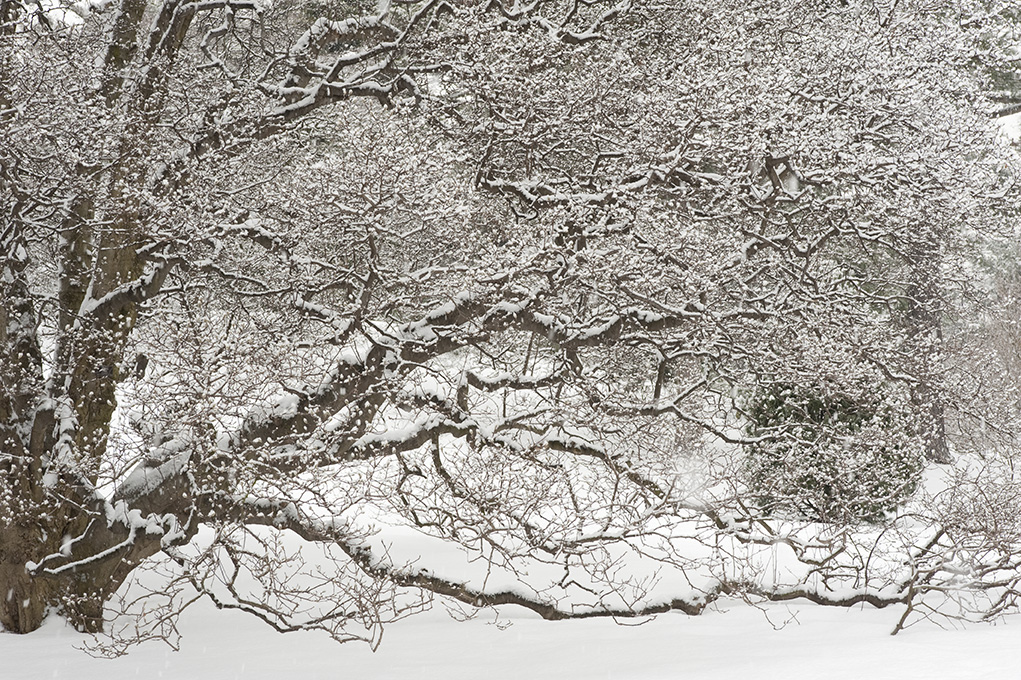
(photo by Ivo M. Vermeulen)
Posted in Science on January 28 2011, by Plant Talk
| Amy Litt is Director of Plant Genomics and Cullman Curator. |
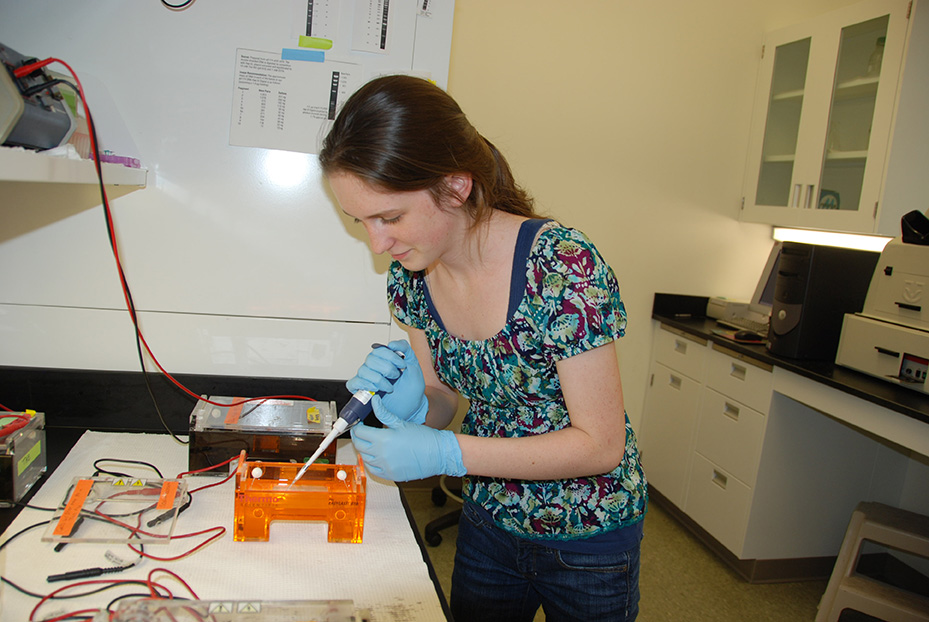 Grace Phillips, a senior at Mamaroneck High School, has been named a finalist in the prestigious Intel Science Talent Search. Phillips worked as a Cullman intern at the Garden for more than two years with graduate student Rachel Meyer on research related to the domestication of the eggplant. It is for this research that she is being recognized. In March, Grace will travel to Washington, D.C.,–along with the 39 other finalists–to participate in final judging, display her work to the public, meet Nobel laureates, and to find out if she has won the top prize of $100,000.
Grace Phillips, a senior at Mamaroneck High School, has been named a finalist in the prestigious Intel Science Talent Search. Phillips worked as a Cullman intern at the Garden for more than two years with graduate student Rachel Meyer on research related to the domestication of the eggplant. It is for this research that she is being recognized. In March, Grace will travel to Washington, D.C.,–along with the 39 other finalists–to participate in final judging, display her work to the public, meet Nobel laureates, and to find out if she has won the top prize of $100,000.
In addition to being a tasty treat, the eggplant has been also cultivated for ages–from India, to China, and to the Pacific Islands–for the plant’s medicinal values. Hundreds, if not thousands, of local variations of the eggplant exist throughout Asia, varying widely in size, shape, color, and flavor; and are used medically for a variety of purposes. It is likely that the medicinal values of the eggplant come from a variety of potent antioxidant compounds found within the fruits.
Phillips studied what impact the role of centuries of human selection–based on taste and medicinal properties–have had upon the eggplant genome. This involved first studying the chemicals that are thought to be responsible for the gastronomic and therapeutic properties of the various local variations (also known as landraces). By correlating the presence of specific antioxidant compounds to specific tastes and medicinal attributes Phillips attempted to answer a simple question: Are certain medicinal uses of eggplants always associated with high concentrations of specific compounds?
After determining the various chemical compounds within the eggplants, Grace then began to study the genes that are directly related to the synthesis of these compounds, looking for correlations between gene activity and compound abundance. Phillips was then able to put all this information together and pose one final question: Are certain taste and medicinal qualities correlated with high levels of specific gene? Or, in other words: As humans selected for eggplants with specific culinary and therapeutic properties, what effect did this intervention have on the eggplant genome and on the plant’s gene functions?
Grace is one of seven finalists from New York State, second only to California’s 11 finalists. She appears to be the only finalist working in the field of plant sciences, and one of only a handful of students studying organismal diversity/evolutionary questions. Grace’s work continues a long heritage of scientific study at The New York Botanical Garden on questions of plant diversity, human-plant interactions, and plant conservation. Everyone here at the Garden applauds Grace’s fantastic work and wishes her the best of luck in March!
Posted in Bill Buck, From the Field, Science on January 28 2011, by William R. Buck
Ed. note: NYBG scientist and Mary Flagler Cary Curator of Botany, Bill Buck is currently on expedition to the islands off Cape Horn, the southernmost point in South America, to study mosses and lichens. Follow his journeys on Plant Talk.
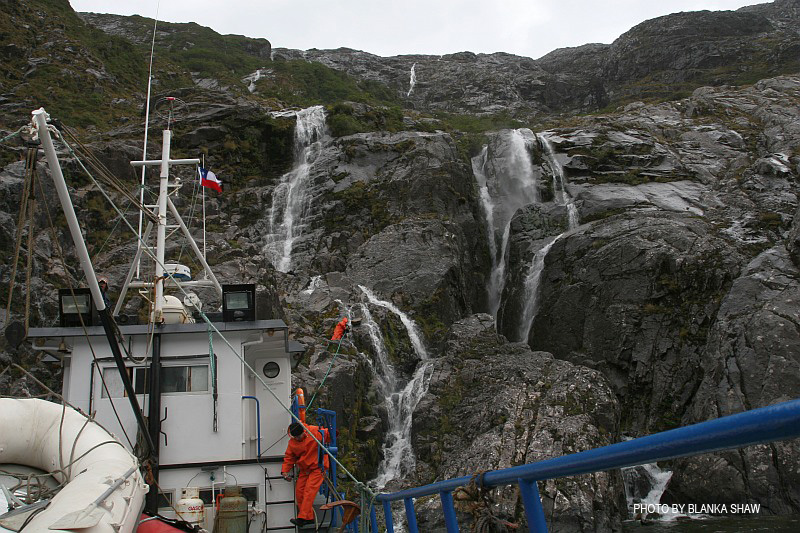 January 23, 2011, Isla Grande de la Tierra del Fuego, Puerto Consuelo, Seno Chasco, Chile, 54° 32’S, 71° 31’W
January 23, 2011, Isla Grande de la Tierra del Fuego, Puerto Consuelo, Seno Chasco, Chile, 54° 32’S, 71° 31’W
Although I am writing this blog daily, it is often impossible to send it. We were told that the modem that we rented would work anywhere, but in reality it needs a clear view to the north. Often times, though, our ship is anchored in a sheltered area with tall, snow-capped mountains on most sides of us. With the severe and changeable weather here, the saying “any port in a storm” takes on extra meaning! So, I continue to write and send them out whenever the modem decides it is in the mood.
Early this morning (5 a.m.) the captain moved the ship from our previous site to the sound directly west. When I awoke to the engine starting, I knew it would be 3-4 hours before we reached our next site, and that we could sleep in for awhile. Maybe an hour later it became obvious that we had left the protected sound for more open waters. The ship started rocking violently. For most of us, it was like rocking a baby in a cradle and put us back to sleep. Only one person felt a little queasy and had to take something for seasickness. Fortunately, so far, no one has actually gotten sick. In my previous trip to the region, on our second day our, we hit a large storm which crashed 12 foot waves over the ship for hours on end. As our bunkroom was transformed into a vomitorium, I was the only non-crew member who didn’t get sick. Since our bunkroom on this trip has minimal ventilation at best, it is a true blessing that this time no one has gotten sick.
It was immediately obvious when we entered the next sound, suddenly the waters were much calmer. At about 8:30 a.m., the ship stopped. I assumed that meant we were at our next site. Such was not the case. Rather, we were taking on fresh water. To do this, the ship will pull up to a waterfall and one of the crew scrambles up the cliff face with a plastic bucket that is outfitted with a hose coming out of the bottom of it. The bucket goes into the waterfall and the end of the hose is placed into the hatch of the water tank, on top of the ship. We are in a totally uninhabited place, one that gets around 12 feet of rain a year, much of which at higher elevations falls as snow. So even in mid-summer, given that there are no large mammals to pollute it, the snow-melt water is pure and cold, which is good because it is the only fresh water we have. After watching the crew member (José) go up the cliff face like a monkey, I told him now we just need to teach him to collect mosses!
Read more about Bill's adventures below.
Posted in Photography on January 28 2011, by Plant Talk
Abstraction on the Seasonal Border.
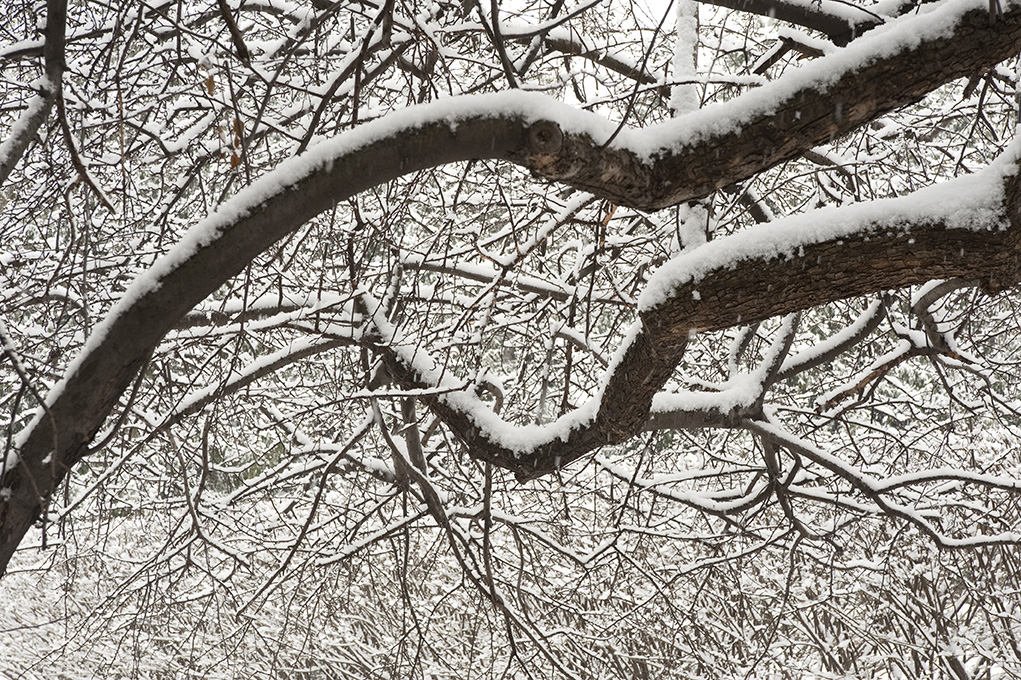
(photo by Ivo M. Vermeulen)
Posted in Bill Buck, From the Field, Science on January 27 2011, by William R. Buck
Ed. note: NYBG scientist and Mary Flagler Cary Curator of Botany, Bill Buck is currently on expedition to the islands off Cape Horn, the southernmost point in South America, to study mosses and lichens. Follow his journeys on Plant Talk.
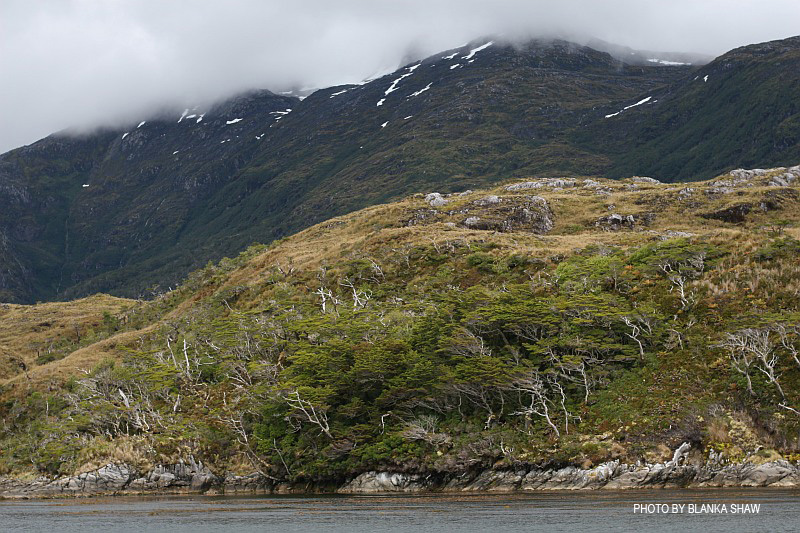 January 22, 2011, Isla Grande de la Tierra del Fuego, Seno Brujo,, Chile, 54° 30’S, 71° 32’W
January 22, 2011, Isla Grande de la Tierra del Fuego, Seno Brujo,, Chile, 54° 30’S, 71° 32’W
Yes, we’re in the same place as yesterday. The captain of our ship said that last night, winds of 80 knots (88 mph) were expected, and so he did not want to take the ship out into open water. 88 mph!! That’s hurricane force winds, and indeed during the night the winds howled and the ship was buffeted about.
I got up in the night and went out onto the deck at 3:45 a.m. The deck was illuminated with moonlight, many stars were visible, and the snow glowed on nearby mountains; however, the wind was strong and I held onto the railing to make sure I wouldn’t be blown overboard. Moments like this, alone in the glory of nature, are the moments I treasure above almost everything else. When I came out again at 6:15 a.m., the sun had risen, the winds had died down and the sky was mostly clear. If nothing else, the weather here can change quickly.
By the time we were ready to go into the field, it had started to rain again, but this time only lightly, and the winds, and thus the sea, remained calm. We headed toward what we initially thought was a lake but instead turned out to be a shallow inlet of the sea, accessible by zodiac. We split up and Jim headed toward a large, glacier-fed waterfall because of his special interest in rheophytic bryophytes, those that grow on rocks in moving water. Some rheophytes are only in the water seasonally, following rain patterns, and others are permanently wet. Juan headed up the mountain, toward the snow, because the moss genus he is working on for his dissertation often grows on exposed rocks. Blanka collected along the shore of the small inlet, and I headed for the rocky peaks near the shore and the pockets of forest in more sheltered sites.
Learn more about the team's goal for this expedition below.
Posted in Photography on January 27 2011, by Plant Talk
No, we’re not bioengineering treat-dispensing shrubbery. It’s just snowing a lot this winter, coating everything in what, on some days, looks like a thick layer of Marshmallow Fluff.
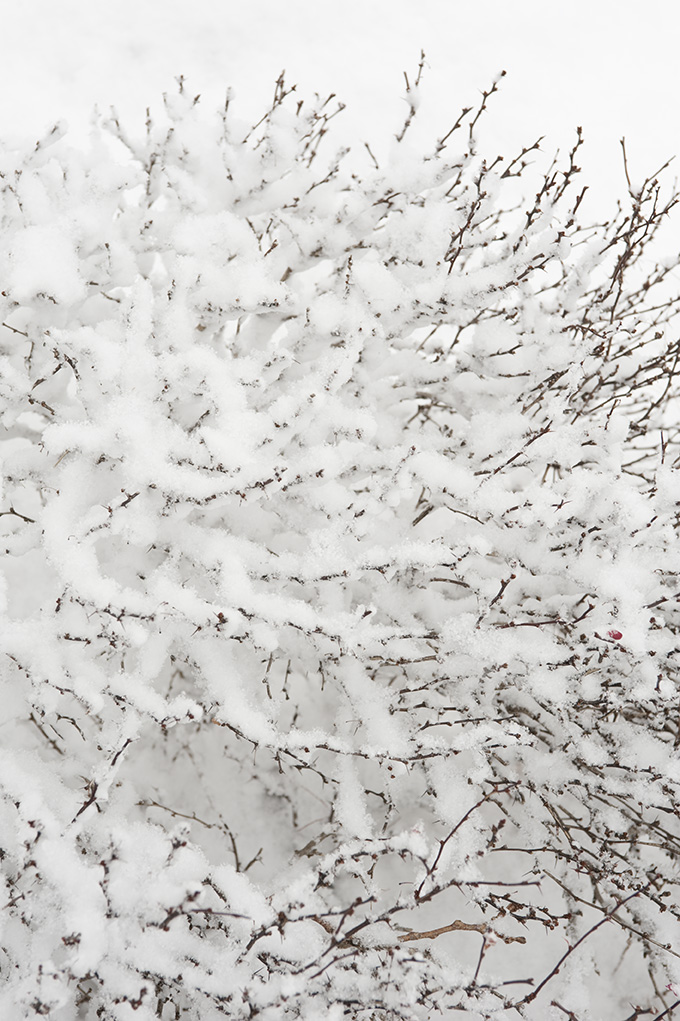
Snowy Shrubbery (photo by Ivo M. Vermeulen).
Posted in Bill Buck, From the Field, Science on January 26 2011, by William R. Buck
Ed. note: NYBG scientist and Mary Flagler Cary Curator of Botany, Bill Buck is currently on expedition to the islands off Cape Horn, the southernmost point in South America, to study mosses and lichens. Follow his journeys on Plant Talk.
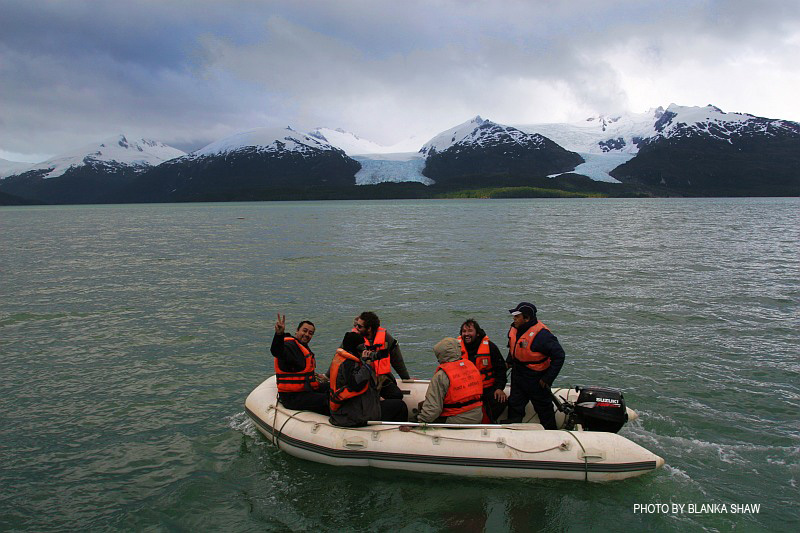 January 21, 2011, Isla Grande de la Tierra del Fuego, Seno Brujo, Chile, 54° 30’S, 71° 32’W
January 21, 2011, Isla Grande de la Tierra del Fuego, Seno Brujo, Chile, 54° 30’S, 71° 32’W
The weather caught up with us today. I’ve hardly mentioned the weather, up to this point, because it is such a part of the region that it’s easy to take it for granted. Prior to the trip I warned everyone to be prepared for temperatures around 50ºF, 40 mph winds, and rain. Until today we had been lucky. By that I mean, it has been cool, and somewhat windy, but with only occasional light rain. Here, this is considered good summer weather! Yesterday, our first full collecting day, the weather was cool and breezy with intermittent light rain. Last night when we were discussing the day among ourselves, some of our group hadn’t even noticed that it had rained at all, and it probably rained about a third of the time in the morning. But it was only a light rain and the vegetation is permanently wet, so a little more water was easy to overlook.
Early this morning we left Seno Bluff for the next sound to the west, Seno Sargazos. It was calm waters and overcast but not raining. Right after breakfast we went ashore and collected for several hours along a lake-fed river. I asked the Chileans what they would call the vegetation and was told it was called Magellanic tundra. What a good name! There were only patches of trees in small ravines, the landscape mostly consisted of tussocks of herbaceous plants and bryophytes about 2 feet tall that are very spongy underfoot, with holes between the tussocks. Walking was slow and treacherous. However, collecting was good and we found some real sub-Antarctic mosses.
During lunch we moved the ship to the next sound west, Seno Brujo. Our goal was to get to the southernmost end of it and then work up a river to a large lake we could seen on a map. I guess the rough seas between the two sounds should have been an indication that the weather was changing. When we arrived it was raining hard, but wasn’t too windy, and we decided to go collecting at least for a couple of hours. However, as we suited up in our rain gear, the weather worsened. Once we were standing out on the deck, ready to board the zodiac to go ashore, the rain became torrential and the wind picked up, driving the rain almost horizontally. When it hit your skin it felt like sleet because of the force as well as how cold it was.
The waters were rough with white tops being driven up by the wind. I made an executive decision that we would not go out in the afternoon, much to everyone’s relief. So, we’ll spend the night here tonight, in a slightly more sheltered cove, and go out in the morning. In this part of the world the weather is always a factor, but it is this very weather that results in such lush bryophytes. It is also the reason why the area is uninhabited and the landscape is so stunningly spectacular. But that can wait for morning!
Bill Buck’s Previous Reports From the Field
January 20, 2011, Isla Grande de la Tierra del Fuego, Seno Bluff, Chile
January 18, 2011, Punta Arenas, Chile
January 16, 2011, Punta Arenas, Chile
 January 24, 2011, Seno Chasco, just north of isthmus to Brecknock Peninsula, Chile, 54° 34’S, 71° 39’W
January 24, 2011, Seno Chasco, just north of isthmus to Brecknock Peninsula, Chile, 54° 34’S, 71° 39’W 








